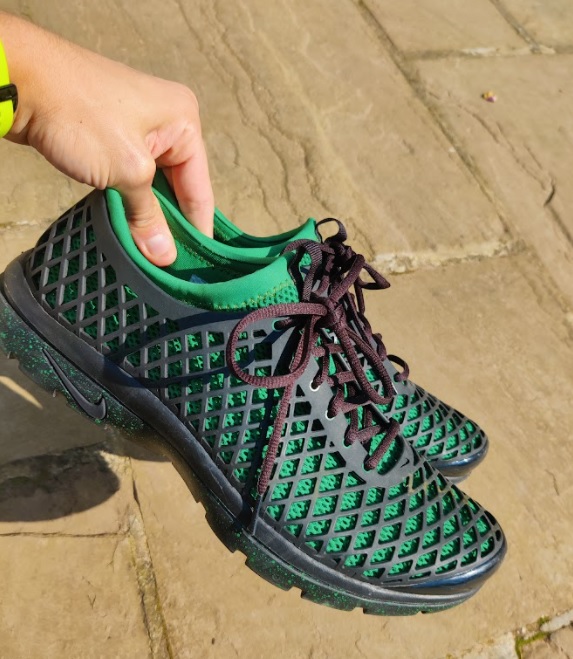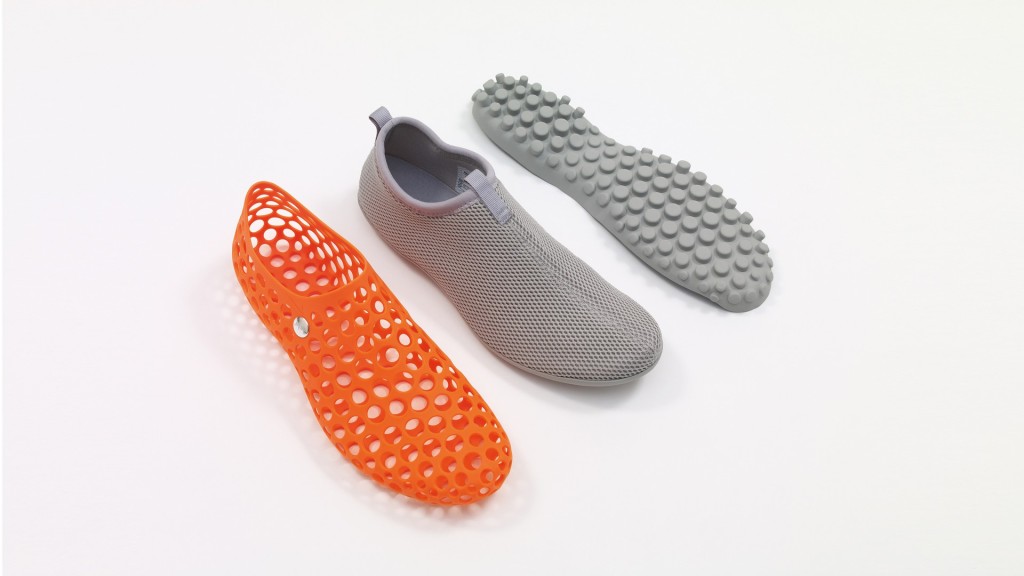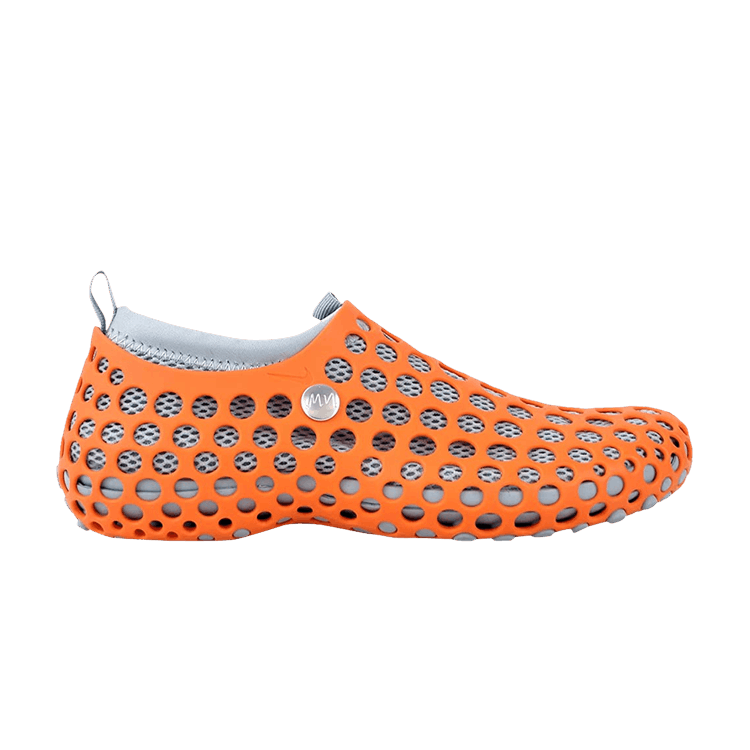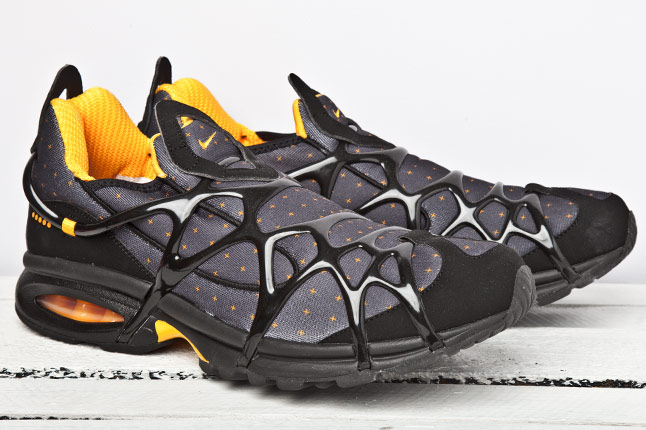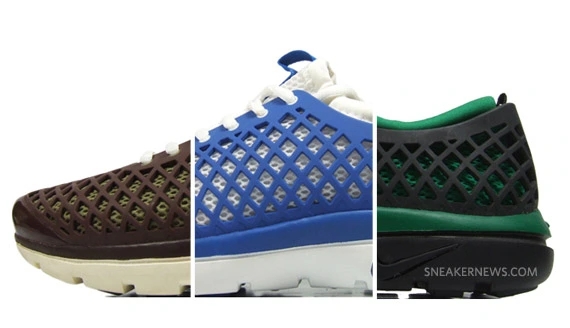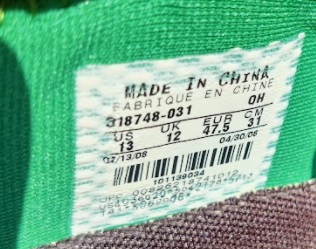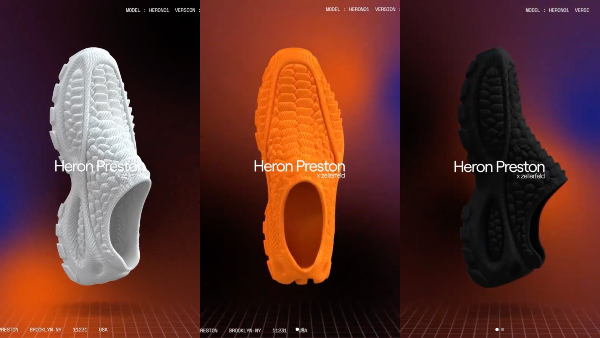
Back when the first Air Max released in 1987, people’s minds were blown by the exposed Air unit. How do I know that? Well, Nike have done a great job marketing and documenting this, making sure its Air Max line remains relevant for years to come.
Now-a-days, releases from the Swoosh still embrace that same Air technology, just look at the Air Max Scorpion which dropped in the second half of 2022. Recent models like the Air Max 720 and 270 were also added to the lineage, dropping on Air Max day in 2019 and receiving lots of attention, yet has seen waning interest post-pandemic (admittedly, the Air Max 270 is still a go-to gym shoe for many). So, which of these is the Retro of tomorrow, the retro of the future? Is it the Scorpion with its crazy sole unit? Possibly, but I’d like to think otherwise.
We need to truly understand how mind-blowing and crazy the reactions were to the exposed Air unit on the Air Max 87/1 to really understand the possible future of the footwear market. We need to ask ourselves as sneakerheads or as people with interest in the industry, which recent drops created a reaction in the past few years? We need to look at shoes that may seem wild and futuristic now, but will fit perfectly within the design language of 20 or 30 years’ time.

Just look at the success New Balance is having with its NB 1906R and 2002R, models designed over 10 years ago that look like they were only penned yesterday. That’s just one example, but even then it’s too close to its original. We need to look to the 80s and 90s, releases from 20 years plus which still fit in today.
Of course, the Air Max line was designed with a running purpose in mind. The Air Max 95 “Neon” colourway had a black midsole because they were a trail running shoe first, a detail that would allow the midsole to look clean after a heavy trek in your local woods. It may not seem like a big deal now but most shoes at the time had a white midsole, so this feature really went against the grain.

With that logic, do we look at the Nike Wildhorse or updated Pegasus line as future-retros that will have sneakerheads going wild? Old Pegasus models such as the 83 still receives love from the vintage runner afficionados and mainstream market, their classic silhouette making them easy to wear. The rubber midsole on the pre-2000s edition is also much more durable than its updated foam counterpart. While the latest 39 version might be way better for energy return, I think it comes at a cost of foam durability, as Lao Tzu once said, “The flame that burns Twice as bright burns half as long.” Therefore, in my opinion, the Peg 83 would outlast the Peg 39 by quite some miles. On the other hand, you can still see the early 2000s Peg editions pop up on eBay from time-to-time so I might be completely wrong. Chances are though that they were only copped when Stewart was adamant to embrace his New Year’s challenge and picked them up from his local sports shop only to remain hidden in his pantry cupboard after a handful of 5Ks. We’ve all been there Stewart, chin up.
Having considered these run specific lines, I would like to look elsewhere for a more promising suggestion. Keeping it within Nike, if we look at the brand’s most cutting edge division, it’s got to be the ISPA line formed in 2018 (Improvise, Scavenge, Protect and Adapt). When I used to work at the Size? store in Manchester, there was one shoe that I’ll always remember leaving a huge impression. I worked in the stockroom, meaning hundreds of different shoes would pass under my nose as I booked them in for delivery. That one shoe which I remember to this day, was the Nike ISPA Road Warrior from 2021. Granted, Zoom units aren’t ‘new technology’ and we’ve seen them exposed before thanks to the Zoom Spiridon Cage 2, but not like this.

The shoe had a total of four Zoom units, two of which were stacked! Not to mention the quasi-Shox looking springboard mechanism that housed the Zoom units, plus the assortment of techy straps attached to the knit upper. The shoe was wild and still is! That to me is a great example of contemporary Nike innovation. Side note: I wanted to try the pair on but we only had them in women’s sizes so the closest I got was a description from my stockroom friend who happened to be a UK6. To this day I have to go off, “oooo, these are bouncy aren’t they”, a less than sufficient description to say the least.

I recently picked up the Nike ISPA Link, eager to get a taste of the division’s technical prowess and believe you me, I was not disappointed. This forward thinking design from the ISPA division combines the latest of technologies for the modern human (enter “all humans are athletes” phrase here). That’s a thought process that all the best designers of their time were considering, think Tinker, Peter Moore or Bruce Kilgore, something which has been side-lined with a large portion of Nike’s recent output. Then again, the brand needs to sell basic logo Ts and simple retros to fund the research process. A process that went on to fund Kipchoge’s sub 2 hour marathon and kept it true to Nike’s “Impossible is Nothing” ethos. Back to the designers though, what do those guys have in common? Is it the socks they wear or the toothpaste they use? Unlikely. Jokes asid, what links the aforementioned designers was that they all created a silhouette, a shoe which is still relevant in the industry today. Sure, the Swoosh’s marketing plays a part but the product comes first (or so I’ve been tricked into thinking).

As we have seen recently, cutting edge thinking isn’t everything. Look at the 2022 retro of the Nike Air Kukini and its lukewarm reception from sneakerheads, the models now sat on shelves at 60% off and they’re still sitting. Madness. These were birthed out of Nike’s Alpha Project division that embraced futuristic design brought on by the turn of the millennia.
The early 2000s actually birthed a number of forward thinking editions to the sneaker world, such as adidas’ Crazy 1, the ACG Air Dri-Goat and the Air Jordan XV Moc, influenced by a cultural fascination about what the future would look like, a theme reflected by film and TV. Most of the models only gained a cult following, with specific parts of the world resonating with these releases more so than others. You don’t even have to look that far back to see a tech-heavy shoe flop. Take the adidas Springblade, a wild looking addition that saw a quick transition from shop floor to adidas archive. This is good news for sneakerheads like myself who end up picking up an old pair of Springblades for about £30 on the second hand market. Mind you, it’s definitely more of a niche pickup.

So that doesn’t exactly bode well for my theory on the Road Warriors or the rest of the ISPA division for that matter. While it may have caused a reaction amongst a small number sneakerheads including myself, it doesn’t come close to that of the Air Max 1 back in ’87. This might have something to do with modern culture though rather than the shoe itself. The internet and drained serotonin levels amongst those 15-25 have resulted in a lack of surprise and shock value. Chances are you’ve seen a shoe on social media before you’ve seen them on the shelf at your local shop. A shoe would have to be that much crazier in order to gain a reaction out of you, or some might be gassed with the shoe in hand but be less obvious about their excitement. This thought process isn’t exactly helpful, as it means that shock value could still be both completely relevant and irrelevant, depending on the person. A sticky one still.

How do you go about judging a future retro classic in that case? Perhaps new releases that have gained a mass following and recognition could be an indicator. Look at the JJJJound Projects, each time they’re leaked a shockwave is sent running throughout the sneaker socials. Yet again, this is only a niche crowd of enthusiasts who amplify this excitement and not touching the outer edges of the footwear-loving world. Not to mention the fact that they only deal with classic and iconic silhouettes, so it’s not exactly cutting edge design; back to square one it is.
As a matter of fact, the future could be less about Swooshes and Stripes than it is now. Fashion is closely attached to its cyclical nature, implying that these brands won’t be going anywhere, not for now at least.
Trainers themselves could completely transform between now and 2050, deeming current releases as old and insufficient compared to the designs of the future. We may not use shoes at all, the Barefoot Movement of today has grown since its niche following in the early 2000s, Vivo Barefoot and Vibram Five Finger lines garnering more attention each growing year. The recent Artificial Renditions are also worth considering, taking social media by storm with its incredible new renditions that suggest the future of footwear design will only get more dependent on tech. However, it’s too extensive a subject to try and relate solely to the footwear industry, I only hope that we use it wisely.

In that vein of thought, the Air Jordan and Air Max Line could turn into museum pieces, items only there for household decoration. I realise a lot of Air Jordans have been sold at respected Auction Houses under such a title, however I’m on about the models of today here, not game-worn Jordan’s from the 80s; different kettle of fish.

I recently picked up a pair of all leather Sports shoes from what appears like the 1930/40s period, a truly vintage pair that harks back to the days before Blue Ribbon Sports, years during the early Reebok days. They are truly for decoration though, bought for £20 at an Antiques shop in the town across from mine. Even if they were my size, I wouldn’t even think about wearing them because one, they’d fall apart, and two, they’re just far from practical. This might seem obvious to most of you, yet as someone who loves his old trainers, this mindset is one that only applies to this pair in my collection. Given the fact that I own a silly number of shoes, that’s quite the statement.

This mindset is one that could be applied to all my other pairs, not by me obviously, but to that future individual who finds them knocking about an old Antiques shop. They’d pick them up (unlikely to be a size UK12 mind), and think, “what a great display piece!”. They wouldn’t think, “Aww yeah, I could get about in these” or “Ah wicked! A vintage pair to go straight on foot”; and walk them over to the till in some invisible, minimalist robotic shoes that been invented by some future brand and has built in heating and ventilation systems. Maybe I’m getting ahead of myself like the designers of the early 2000s, take a look at the Nike Adapts though, they’re not miles off.
I’m probably veering too far off topic now, yet I say all that to come to what may be some sort of conclusion. I think the future of footwear will factor in practicality and health a lot more. New science will reveal that people who wear X type of trainers are X% more likely to develop health issues as a result of the footwear they own, creating a dramatic need for change in the industry. Sure the human anatomy is being considered in the design of today, but that’s constricted to the sporting world and more specifically, running. What about the other 85% of our lives that are spent flexing on haters or for the time you’re stuck in office shoes that were based on the formality of the early 20th century?

Brands like adidas started this thought process with its Feet You Wear line of performance trainers and Nike with its Free line, boosting the Barefoot trend for brands like Vivo Barefoot. Other brands like Camper tackle the practicality with formality problem which is good to see but I don’t see them outperforming the brogues at Clarks, change does take time I guess. What I’m saying isn’t new, I just think the science will become harder to ignore.

Can I give you a specific future retro, not really. However, I can tell you the Future of footwear looks practical AND still cool… I hope. Otherwise catch me in a fresh pair of Air Max 90 “Infrareds” looking fairly decrepit and barely being able to walk!


